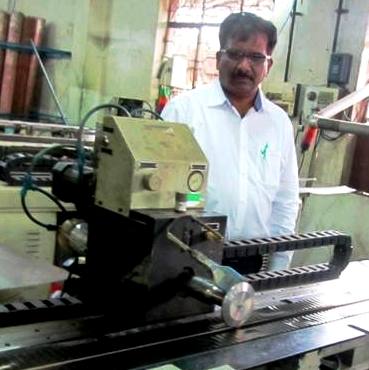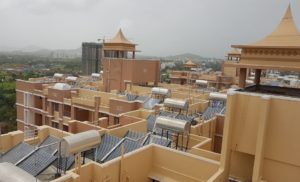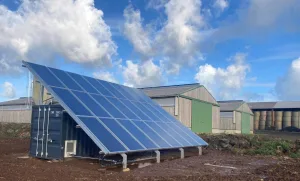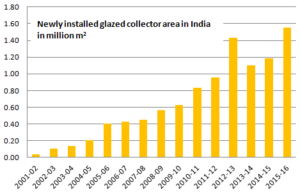India: Bhagyanagar Captures Solar Energy and the Market
October 20, 2014
 At a time when vacuum tube technology is capturing larger shares of India’s solar collector market, one company has been successfully challenging the import competition: Bhagyanagar India Limited (BIL), India’s biggest fin-tube absorber manufacturer. According to the company’s Managing Director, Devendra Surana, the firm increased production volume by 50 % over the last two years, from 149,000 m² of absorber area in 2011 to 225,000 m² in 2013. BIL boasts 4 coating lines and 11 welding machines, and it has recently added a collector assembly site. The photo shows N. Venkateshwara Rao, Vice President of BIL, inspecting an ultrasonic-welding machine.
At a time when vacuum tube technology is capturing larger shares of India’s solar collector market, one company has been successfully challenging the import competition: Bhagyanagar India Limited (BIL), India’s biggest fin-tube absorber manufacturer. According to the company’s Managing Director, Devendra Surana, the firm increased production volume by 50 % over the last two years, from 149,000 m² of absorber area in 2011 to 225,000 m² in 2013. BIL boasts 4 coating lines and 11 welding machines, and it has recently added a collector assembly site. The photo shows N. Venkateshwara Rao, Vice President of BIL, inspecting an ultrasonic-welding machine.Photo: Jaideep Malaviya
“In the next three years, we intend to be selling our complete OEM collectors all across India and increase our turnover to INR 1 billion (approx. EUR 13 million),” Rao explains BIL´s objectives. The vice president also aims at establishing an international coating brand and exporting coated fins and collectors. BIL is part of the Indian Surana Group, a diversified corporation with a turnover of INR 50 billion (approx. EUR 63 million) and a focus on niche areas of copper utilisation in pipework, sheets, foils, power cables, wind power generation, solar PV cells and solar thermal collectors. The group manufactures around 7,000 tons of copper products annually. It started producing absorbers in 2006.
The visionary behind the company’s expansion strategy is managing director Surana (see photo above), a mechanical engineer and management graduate from the Indian Institute of Management Bangalore. “Our core business is making copper products, and coating is a value added,” Surana explains. “To add a new dimension to our coating, we made it almost oxygen-free.” According to Surana, most coating companies in India use an Electrolytic Tough Pitch (ETP) process, which consumes between 200 and 400 ppm of oxygen. “We developed the Oxygen Free High Conductivity (OFHC) process, which uses less than 10 ppm of oxygen,” Surana adds. “This results in better absorptivity and a strong weld. In addition, the surface does not oxidise throughout the product’s life-cycle.” In contrast to the common batch coating, BIL employs a continuous electroplating process, which reduces the water intake by one-tenth.
More information:


